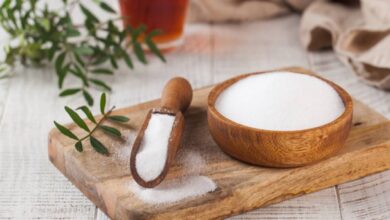Inside Quetaquenosol: Uses and Side Effects

Quetaquenosol, commonly known as Ketoconazole, stands out as a potent antifungal medication with a significant impact on treating various fungal infections. This article delves into the uses, benefits, and potential side effects of Quetaquenosol, shedding light on its role in clinical practice.
What is Quetaquenosol?
Quetaquenosol contains the active ingredient Ketoconazole, belonging to a group of medications effective against fungal infections. Available in forms like tablets, creams, foams, shampoos, and gels, it requires a prescription, especially in oral tablet form.
Used for treating fungal and yeast infections affecting the skin, hair, and blood, Quetaquenosol comes into play when other treatments prove ineffective or cause undesirable effects.
Conditions Treated by Quetaquenosol
Quetaquenosol is deployed to combat a spectrum of fungal infections, including:
- Ringworm of the body
- Ringworm of the leg
- Oral Candidiasis
- Vaginal Candidiasis
- Seborrheic dermatitis
- Dandruff
- Cutaneous candidiasis
- Athlete’s foot
In severe cases such as blastomycosis and histoplasmosis, where conventional antifungals fall short, Quetaquenosol, an FDA-approved treatment, becomes a crucial option.
Benefits of Using Quetaquenosol
The versatility of Quetaquenosol proves instrumental in treating a wide array of fungal infections. Studies highlight its effectiveness against various fungi, making it a valuable solution for stubborn infections that may resist other antifungals.
Research indicates that Quetaquenosol typically starts showing results within 2 to 3 weeks for most fungal infections, showcasing its potency in combating these ailments. Furthermore, its topical formulations present a safer option for superficial infections, minimizing the risk of systemic side effects.
Dosage and Usage Instructions
The prescribed dosage of Quetaquenosol varies based on factors like age, the specific condition, and the form of the medication. For instance:
- Oral tablet strength: 200 mg
- Typical dosage for adults: 200 mg once daily for up to 6 months, potentially increasing to 400 mg if necessary.
- Dosage for children (2-17 years): Weight-dependent, ranging from 3.3-6.6 mg/kg of body weight once per day.
It’s crucial to adhere to healthcare provider recommendations as they tailor the dosage to individual circumstances.
Side Effects of Quetaquenosol
Quetaquenosol may induce both mild and severe side effects. Common ones include headaches, nausea, abdominal pain, and fatigue. However, severe reactions like extreme allergic responses, liver toxicity, adrenal insufficiency, and QT prolongation require immediate medical attention.
Warnings and Precautions
FDA advisories emphasize the importance of monitoring liver function due to the risk of severe liver damage associated with Quetaquenosol. Additionally, caution is warranted in its use, with particular attention to potential adrenal gland issues, avoidance during pregnancy, and risks of QT prolongation when combined with specific medications.
Common Questions
- How long does it take to get rid of a fungus with Quetaquenosol?
- The duration varies, but improvements can be noticed within a few days, and an entire course may last up to 6 months.
- What type of fungus does Quetaquenosol cure?
- Quetaquenosol targets various yeasts and fungi responsible for skin, hair, nails, thrush, and yeast infections.
- How many Quetaquenosol pills do you take per day?
- The dosage depends on the specific condition and doctor’s prescription, typically ranging from 200 mg to 400 mg once a day for adults.
- Which is more effective, Quetaquenosol or clotrimazole?
- Effectiveness depends on the type of infection, with Quetaquenosol often preferred for systemic infections, while clotrimazole is suitable for local, cutaneous infections.
Conclusion:
Quetaquenosol emerges as a vital tool in the battle against fungal infections, balancing effectiveness and potential risks. Collaboration between patients and healthcare providers is paramount to navigating its usage successfully, ensuring optimal results while mitigating possible side effects.
FAQs about Quetaquenosol (Ketoconazole)
1. What is Quetaquenosol, and how does it work?
Quetaquenosol, or Ketoconazole, is a potent antifungal medication used to combat various fungal infections. It works by inhibiting the growth and spread of fungal cells, thereby relieving skin, hair, throat, and more severe systemic infections.
2. What types of fungal infections can Quetaquenosol treat?
Quetaquenosol is effective against a range of fungal infections, including ringworm, candidiasis (oral and vaginal), seborrheic dermatitis, dandruff, athlete’s foot, and cutaneous candidiasis. It may also be prescribed for conditions like tinea versicolor.
3. What are the benefits of using Quetaquenosol?
Quetaquenosol offers several benefits, including its effectiveness against various fungi, flexibility in treating stubborn infections, and relatively quick onset of action. Additionally, topical formulations of Quetaquenosol are safer for superficial infections due to lower systemic side effects.
4. What is the recommended dosage of Quetaquenosol?
Dosage recommendations vary depending on factors such as age, the severity of the condition, and the form of the medication. Typically, for adults, the oral tablet strength is 200 mg once daily, potentially increasing to 400 mg if necessary. Dosage for children is weight-dependent.
5. What are the common side effects of Quetaquenosol?
Common side effects of Quetaquenosol may include headaches, nausea, abdominal pain, dizziness, and fatigue. However, serious side effects such as severe allergic reactions, liver toxicity, adrenal insufficiency, and QT prolongation may also occur and require immediate medical attention.
You May Also Read:




